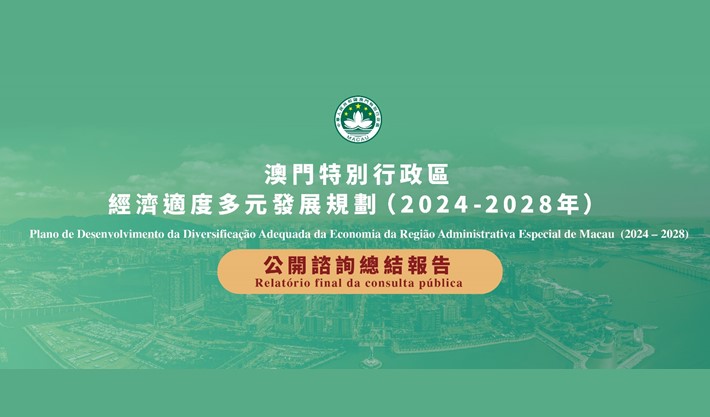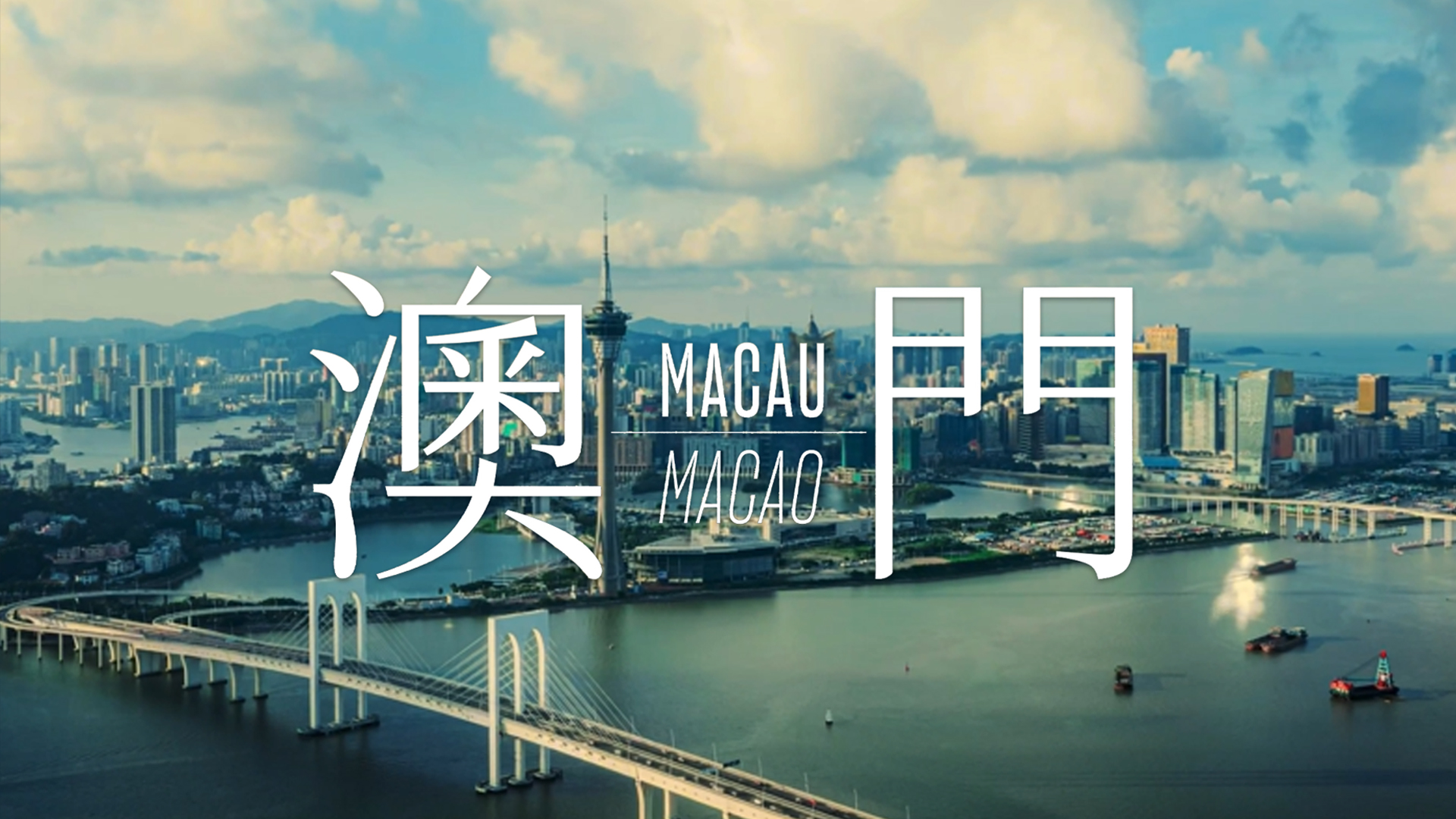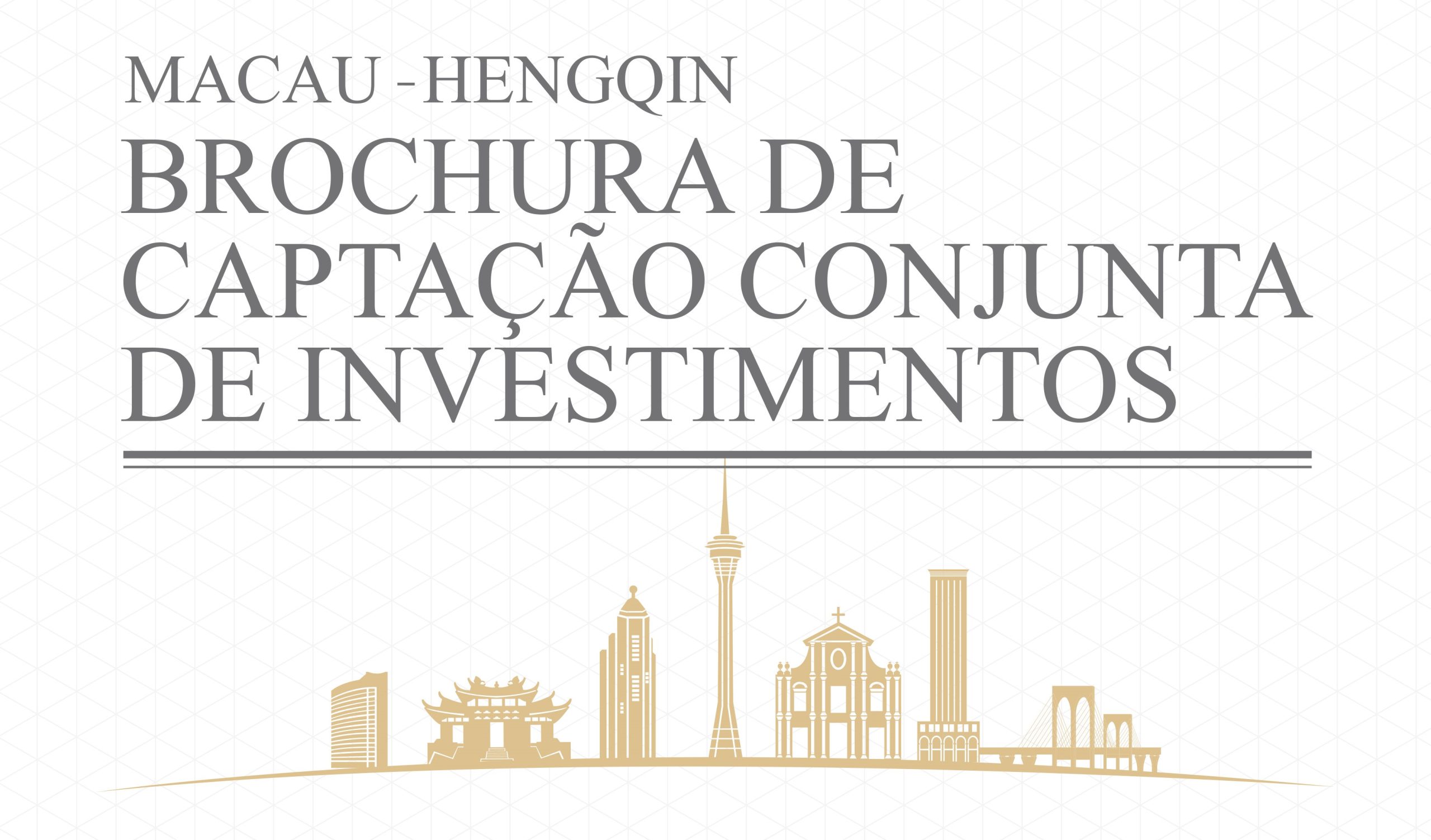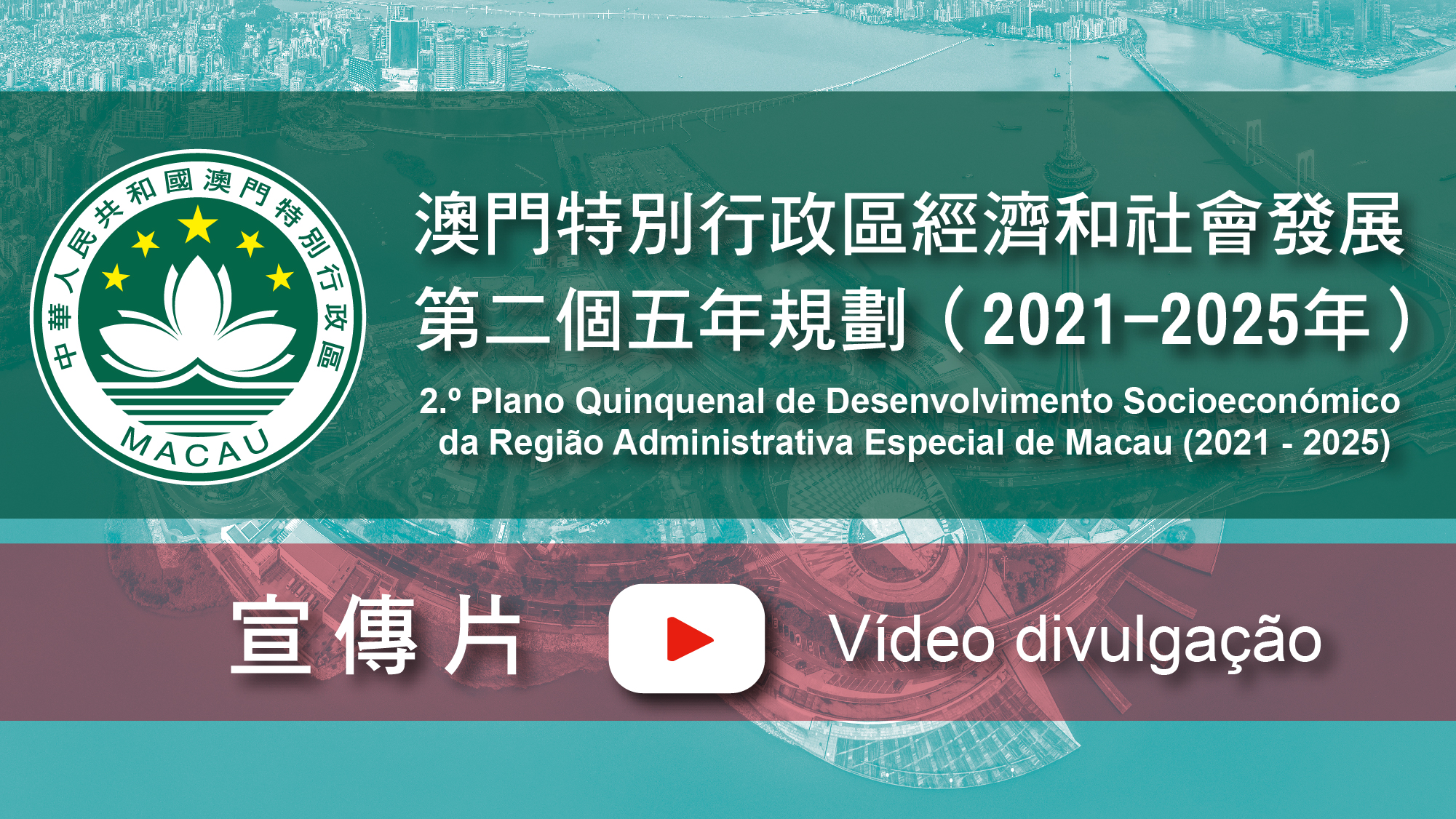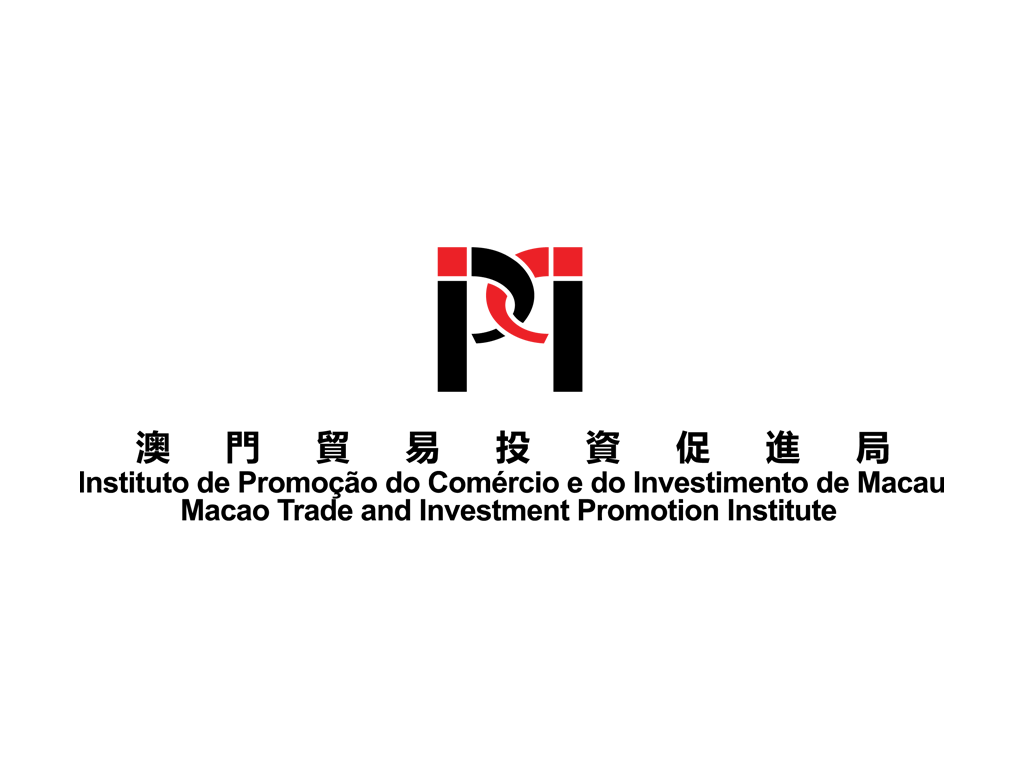Pesquisar
Greater Bay Area Plan lists Macao as core engine for regional growth
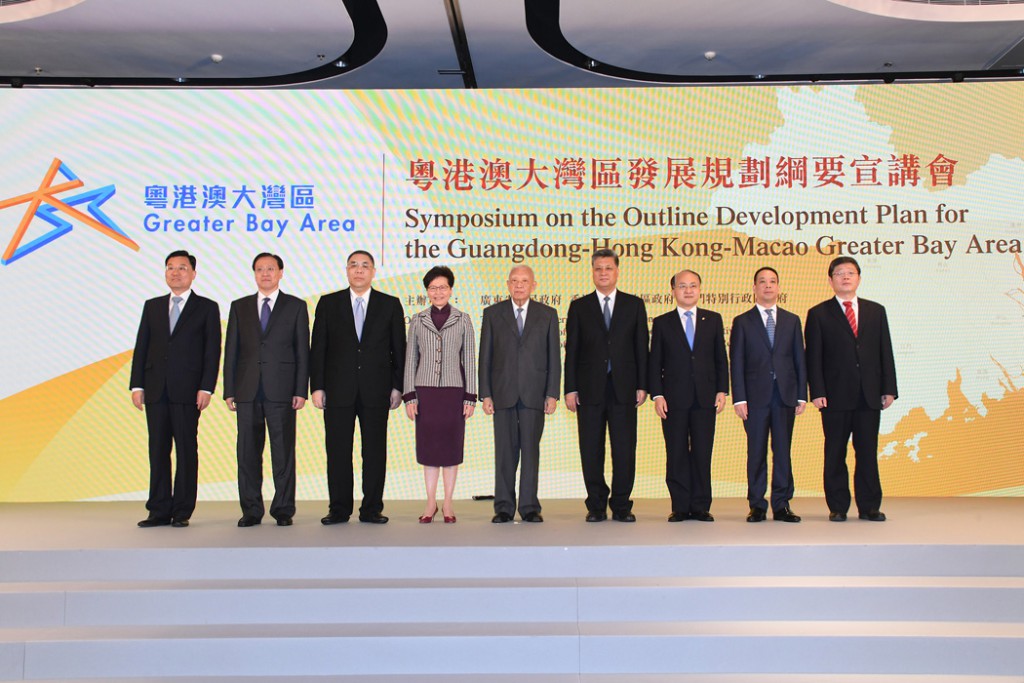
Macao SAR Chief Executive Chui Sai On (third, left) participated in the Symposium on the Outline Development Plan for the Greater Bay Area
Chinese authorities issued the Outline Development Plan for the Guangdong-Hong Kong-Macao Greater Bay Area (the Plan), outlining the positioning strategy, development objectives and spatial layouts of the Greater Bay Area on 18 February 2019.
The Plan positions Hong Kong, Macao, Guangzhou and Shenzhen as core engines for regional development with the aim of transforming the Greater Bay Area into a global hub of innovation and high technology; a cradle of emerging industries; an influencer and a pillar of the convergence of the Silk Road Economic Belt and the 21st Century Maritime Silk Road. It aims to achieve such goals by promoting further integration and co-operation between all cities.
The around 27,000-word Plan identifies the functions and strengths of the cities in the Greater Bay Area, calling for closer co-operation among them.
Among the cities, Macao is positioned to become a “World Centre of Tourism and Leisure; a Commercial and Trade Co-operation Service Platform between China and Portuguese-speaking Countries that promotes the moderate diversification of the city’s economy; and a base for exchange and co-operation where Chinese culture is the mainstream and diverse cultures coexist”.
The Plan proposes five strategic positions for the Greater Bay Area, namely: a vibrant world-class city cluster; an important pillar for the “Belt and Road” Initiative; a pilot zone of in-depth co-operation between Mainland China, Hong Kong and Macao; a quality living circle for living, working and travelling; and a globally influential international innovation and technology hub.
Stepping up innovation and technology
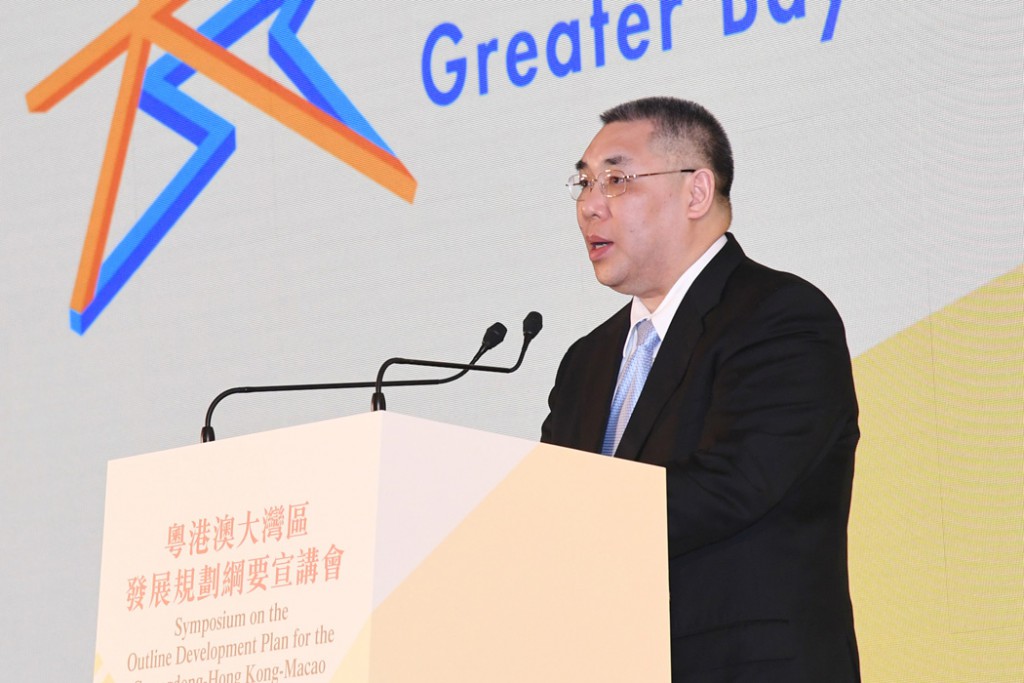
Macao SAR Chief Executive Chui Sai On delivered a speech at the Symposium on the Outline Development Plan for the Greater Bay Area
The Plan’s chapter four – “Developing an International Innovation and Technology Hub” – introduces a road map for how to leverage technological and industrial strengths of the Greater Bay Area in order to build links to global innovation resources, and to create an open community for coordinated innovation in the region.
Some of the major visions include: pursuing the development of the “Guangzhou-Shenzhen-Hong Kong-Macao innovation and technology corridor”; exploring policy measures to facilitate the cross-boundary and regional flow of innovation elements such as talents, capital, information and technologies; jointly constructing a Greater Bay Area big data centre and platforms for international innovation; and intensifying the in-depth integration of industry university research collaboration in the Greater Bay Area.
Legislator Lao Chi Ngai said in an interview with Macao Image, that the technology gap between the eastern and western sections of the Pearl River Delta remains large, but the proposed technology corridor is expected to enable the cities in the region to complement one another based on the scientific and innovation prowess that Hong Kong, Macao and Guangdong obtain.
“Thanks to the ‘one country, two systems’ principle and Macao’s free port status, not only do we have substantial financial resources that attract technological talents from around the world, but also solid foundations for technology and innovation research and development. Hence Macao has an important role to play in this regard,” stated Mr Lao.
“The Plan also proposes to integrate Guangzhou, Shenzhen, Hong Kong and Macao into an innovation and technology corridor, allowing the two separate customs territories– Hong Kong and Macao – to play their roles as a trading channel.”
Legislator Lao continued to suggest local start-ups should scale up their businesses in China against the backdrop of Macao’s relatively small and homogeneous economic system.
Several initiatives outlined in the Plan, including the establishment of mechanisms for innovation and entrepreneurship exchanges, the sharing of resources between Mainland China, Hong Kong and Macao, as well as the enhancement of innovation and entrepreneurship ecosystem between these regions, are some notable initiatives that would spur growth for start-ups, he added.
Ieong Tou Hong, Vice Chairman of Guangdong’s Association for Promotion of Co-operation between Guangdong, Hong Kong and Macao, argued that technology incubators in Macao lack entrepreneurial assistance such as technological training, large corporate guidance and financial support. He suggested local incubators to learn from Mainland China.
“The incubator town in Hangzhou, for example, is backed by Alibaba and Zhejiang University, which offers technological knowledge to entrepreneurs,” said Mr Ieong. “Apart from working areas, leisure features and business hotels, the incubator also offers market trends and tutorials by high-ranking officers at big corporations in order to lay the groundwork for a successful entrepreneurship,” he added.
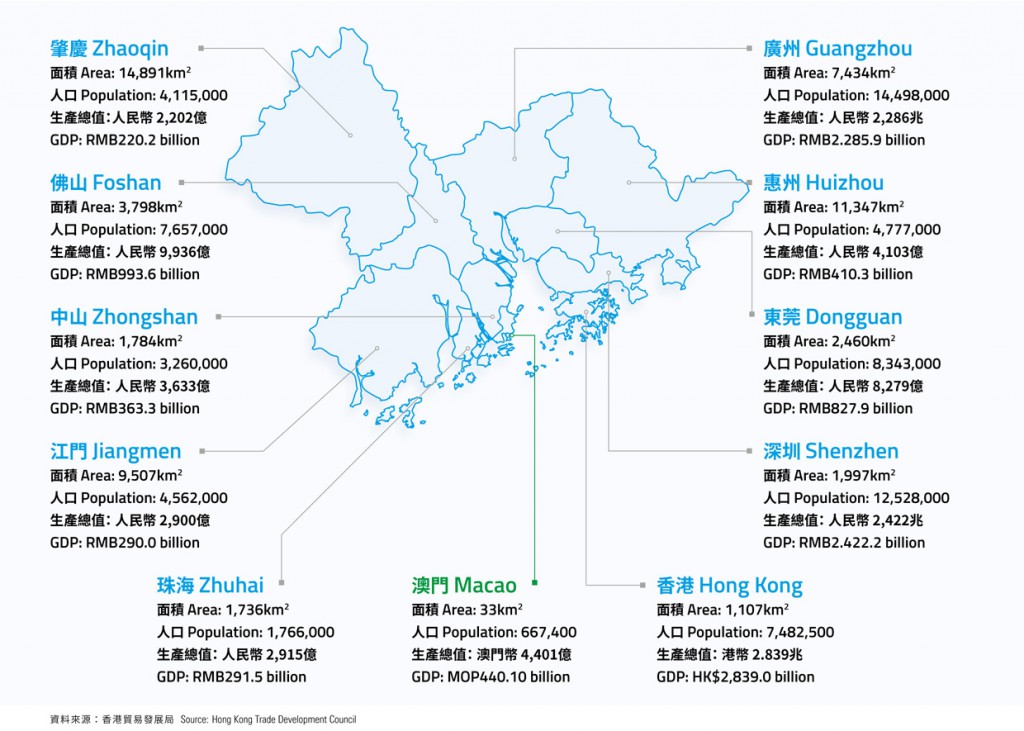
Source: Hong Kong Trade Development Council
Featured finance – adding new layers to the local economy
Financial support is crucial in the pursuit of technological and innovation advancement. To establish a globally competitive financial system, the Plan proposes to deepen the implementation of liberalisation measures for service sectors of Hong Kong and Macao under the Closer Economic Partnership Arrangements (CEPA) with Mainland China; further freeing up Mainland China’s trade in services with Hong Kong and Macao; taking forward investment facilitation; further lifting or relaxing investor restrictions on Hong Kong and Macao such as qualification requirements, percentage of shareholding and market access; and providing one-stop services in Guangdong to Hong Kong and Macao investors and related practitioners.
The China-Portuguese Speaking Countries Co-operation and Development Fund, whose headquarters moved to Macao in June 2017, has lifted the curtain on the development of Macao’s featured financial products and services, remarked Mr Ieong.
“The Fund ensures capital inflows come from legitimate channels and at the same time encourages legal capital flows. Also, it facilitates financial personnel in providing corporations with financial management solutions and investment options,” he added.
Integrating more non-gaming elements in the tourism and gaming sector, by means of developing the city’s featured financial system, is key to promoting moderate industrial diversity, said legislator Lao. “Developing a China-Portuguese-speaking Countries financial services platform, establishing an export credit insurance system and developing a renminbi (RMB) clearing centre for Portuguese-speaking Countries, are key measures in the development of Macao’s featured financial products and services.”
“Adding featured financial products to the portfolio can also boost coordination between finance and other industries, which is a key initiative in driving economic diversification,” he added.
As proposed in the Plan, developing featured financial products and services and promoting mutual financial markets access are some of the integral financial initiatives in the pursuit of a diversified economy.
Strategies proposed to expand the scale and scope of cross-boundary use of renminbi in the Greater Bay Area include: allowing banking institutions in the Greater Bay Area to launch cross-boundary RMB interbank lending; issuing RMB bonds; studying the feasibility of establishing a Macao-based securities market denominated and cleared in RMB; and building a green finance platform and a Sino-Portuguese-speaking Countries financial services platform.
However, the use of cross-boundary RMB has often been hindered by the “one country, two systems, three customs territories” framework. With different social and legal systems as well as customs territories, the Plan stresses that Guangdong, Hong Kong and Macao should adhere to the “one country” principle, while leveraging the benefits of “two systems”. The Plan also proposes to integrate the needs of Mainland China with the strengths of the two special administrative regions in order to enhance the effect of the existing mechanisms and promote further integration among these markets.
Addressing the unshakable fact that there are three customs territories, Mr Ieong said the solution lies in streamlining customs procedures.
“In adherence to the practice of ‘one country, two systems’, there is considerable room for improvement in terms of border management,” he said, adding the establishment of a large financial system like Macao’s featured finance takes time.
“I believe more laws and regulations will be put in place as Macao’s featured financial sector continues to grow. Business volume will increase when more companies in this sector emerge.”
Scaling the use of RMB in Lusophone countries has been critical for China to increase its currency’s status in global finance. Legislator Lao suggested fully leveraging the advantages of Macao’s role as a Commercial and Trade Co-operation Service Platform between China and Portuguese-speaking Countries, as well our free port status to complement the country’s development strategies. “Not only would it help forge ahead the RMB internationalisation agenda but would also help promote adequate economic diversification in Macao,” he noted.
Some Chinese manufactured products that are plagued by overcapacity, such as automobiles, are probably in high demand by Lusophone countries, he continued. “It is believed that the demand in Portuguese-speaking Countries has great potential to grow. Therefore, establishing an export credit insurance system and RMB foreign exchange spots are expected to strengthen Macao’s role as a China-Portuguese-speaking Countries platform.”
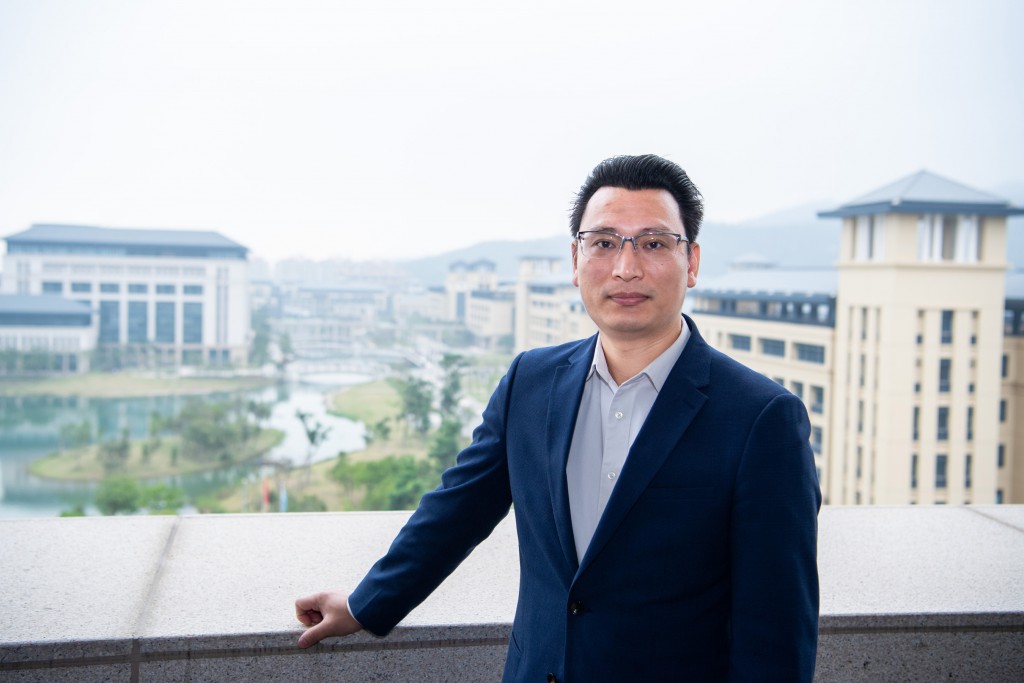
Legislator Lao Chi Ngai says Macao has an important role to play in the development of the Greater Bay Area
Enriching cross-border tourism products
On the tourism front, the Plan steers the progress of Macao’s tourism sector towards a World Centre of Tourism and Leisure. It calls for setting up a tourism co-operation alliance in Macao for cities in the Greater Bay Area; developing a system with diverse tourism products; building a bay area for leisure; optimising the “144-hour Facilitation Visa” policy in the Pearl River Delta region; developing multi-destination tourism products and a diversified tourism platform; and improving the quality of tourism and leisure.
Legislator Lao said that the concept of having multi-destination tourism products aims to develop a shared tourism market among the cities in the region, targeting international visitors.
“A world cultural heritage, the Kaiping Diaolou and villages in Jiangmen province, for instance, echo the world heritage sites in Macao,” he explained.
“Multi-destination tourism products not only can enhance attractiveness and competitiveness for the region, but also consolidate Macao’s role as a World Centre of Tourism and Leisure. To achieve that, transportation and visa policies within the Greater Bay Area have to be enhanced,” said Mr Lao.
To speed up the process of becoming a World Centre of Tourism and Leisure, the Plan calls for the implementation of yacht tourism to be developed between Guangdong, Hong Kong and Macao, and the development of high-end tourism products jointly launched by the Greater Bay Area cities. A free port for international yachts is also expected to be built in the region.
Mr Ieong suggested that regulatory procedures have to be appropriately relaxed to effectively build an international cruise market.
“Up to now, all yachts that seek to enter Macao are subject to a substantial security deposit based on the valuations of yachts. Also, yachts are allowed to travel on regulated point-to-point routes only,” explained Mr Ieong. “Regulatory procedure has to be simplified to achieve international yacht tourism. For example, the Customs can track the location and movement of a yacht simply by installing a GPS system on it,” he added.
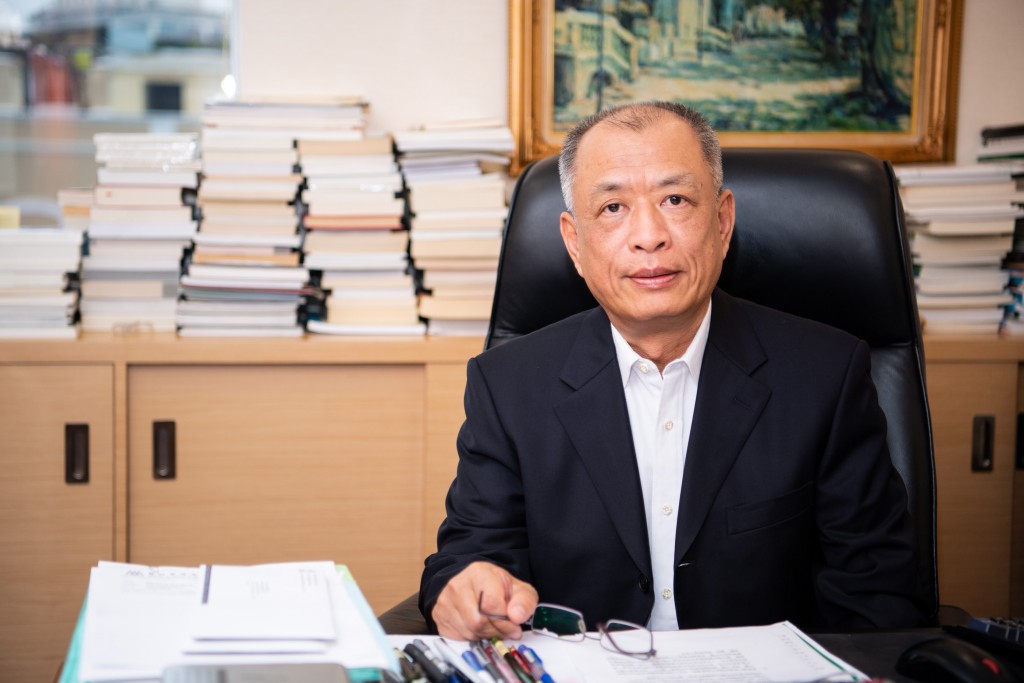
Ieong Tou Hong, Vice Chairman of the Association for Promotion of Co-operation between Guangdong, Hong Kong and Macao, expects the Greater Bay Area to boost Macao’s featured financial sector
A pillar for Belt and Road
In chapter nine, the Plan lays out a blueprint to strengthen co-operation between the nine cities and calls for them to take part in the development of the “Belt and Road” Initiative.
Measures include: deepening co-operation among Guangdong, Hong Kong and Macao; further enhancing the investment and business environment in the nine Pearl River Delta municipalities; strengthening co-operation among Hong Kong, Macao, Qianhai, Hengqin and Nansha in order to enhance the degree of market integration; fully aligning with advanced international market regulatory regimes and standards; creating an environment for opening-up; jointly creating a new edge in international economic and trade co-operation; and providing solid support for the “Belt and Road” Initiative.
“The Greater Bay Area plays a key role in supporting the development of the ‘Belt and Road Initiative’,” Legislator Lao said, adding Hong Kong and Macao remain as China’s “window and bridge to the outside world”. He was referring to ways to organically combine the development of the Greater Bay Area and the construction of the Belt and Road.
“Together with the ‘13th five-year plan’, Macao can make use of its extensive international network to connect China to the rest of the world as the country advances its opening-up policies,” said Mr Lao. “As a platform connecting China to the world, Macao will continue to contribute to China’s two-way opening-up reform and prosper together with China by helping Mainland China’s enterprises in ‘going global’ and ‘bringing in investments’.”
KPMG, a company providing audit, tax and advisory services, describes the Plan as a catalyst to drive economic growth in the region in a separate report. It refers to the Greater Bay Area as an “opportunity not to be missed by enterprises seeking penetration into the Chinese market or having establishments here”.
The report recommends enterprises to assess the potential impacts of Greater Bay Area integration and to develop comprehensive business policies based on the connectivity of the area, as well as the flows of goods, talent, and resources within the region.
The size, economic potential and interconnectivity of the region, it adds, will open up a new horizon of opportunities for a wide range of sectors including infrastructure, construction, real estate, financial services, insurance, capital markets, and technology.
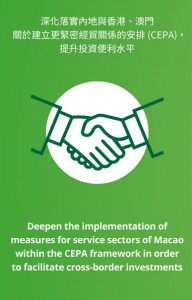
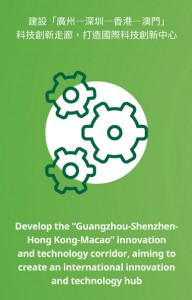
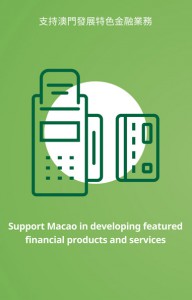
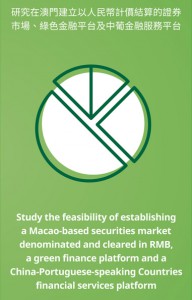
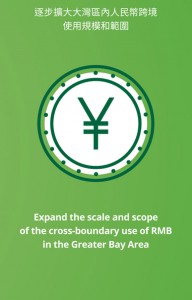
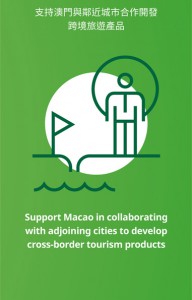
Symposium on the Outline Development Plan for the Greater Bay Area
At the Symposium on the Outline Development Plan for the Guangdong-Hong Kong-Macao Greater Bay Area in Hong Kong on 21 February 2019, Macao Special Administrative Region (SAR) Chief Executive Chui Sai On stated that Macao is committed to embracing the “two-pronged” approach and to fully leveraging Macao’s institutional advantages and innovation capability, collaborate with different cities in the Greater Bay Area for enhancing Macao’s moderate economic diversification, and to pave the way for wider development opportunities. Mr Chui led the delegation of the Macao SAR Government that took part in the event.
At the symposium jointly hosted by the governments of Guangdong, Hong Kong and Macao, the Macao SAR Chief Executive said the Macao SAR Government has set up the “Working Committee for the Development of the Guangdong-Hong Kong-Macao Greater Bay Area” to advance Macao’s strategic position as a “World Centre of Tourism and Leisure” and as a “Commercial and Trade Co-operation Service Platform between China and Portuguese-speaking Countries”, in order to improve the competitiveness of the city’s emerging industries and accelerate the moderate diversification of the city’s economy.
In his speech, Mr Chui said Macao aims to be a pioneer in driving the region forward in a proactive manner. The measures include: integrating Macao’s “Five-Year Development Plan” and measures from the Government’s Policy Address with the Outline Development Plan for better and targeted participation in the construction of the Greater Bay Area; stepping up efforts to support the growth of the science and technology sectors and actively join the building of an international technology and innovation centre; setting up a task group for advancement of innovation, science and technology and of a smart-city concept with the aim of advancing the building of the “Guangdong-Shenzhen-Hong Kong-Macao innovation and technology corridor”; encouraging local educational institutions to strengthen science and technology research; accelerating innovation by collaborating in production, education and research with other Greater Bay Area cities; integrating the Greater Bay Area with the “Belt and Road” Initiative based on the “Arrangement for advancing Macao’s Full Participation in and Contribution to the Belt and Road Initiative”, which was signed by the Macao SAR Government and the National Development and Reform Commission; making use of Macao’s strengths to improve collaboration with places covered by the “Belt and Road” Initiative, particularly Portuguese-speaking Countries, in order to turn the Greater Bay Area into a key pillar for the development of the “Belt and Road” Initiative.



